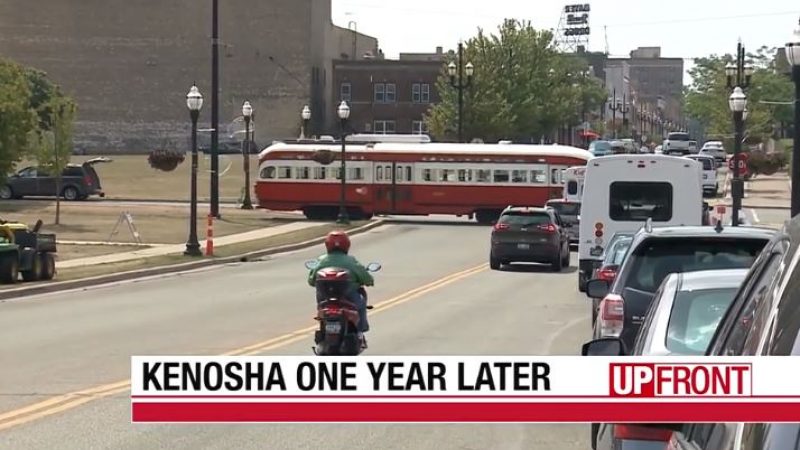Almost a year after the shooting of Jacob Blake, the officer who shot Blake is back at work in the Kenosha Police Department, but has not returned to patrol duty.
Officer Rusten Sheskey, who is white, was cleared in the shooting of Blake, a Black man. Sheskey is doing administrative tasks in the detective bureau, Kenosha Police Department interim Chief Eric Larsen told the statewide “UpFront” program, produced in partnership with WisPolitics.com.
The shooting of Blake on August 23, 2020, touched off days of protests, some of which turned violent, and put Kenosha at the center of the national debate about police violence and racial injustice. Parts of the city went up in flames and dozens of businesses were damaged, looted, burned or destroyed. Blake survived the shooting, but remains paralyzed.
“UpFront” host Adrienne Pedersen asked Larsen whether Sheskey would return to patrol duty.
“I think it’s too soon to say,” Larsen said. “I don’t know that where we are with the community right now, that some are ready for him.”
“He is performing meaningful work. So it’s not just that he’s sitting in some office,” Larsen said.
Larsen said the department has made changes, including introducing a bias-free policing program, and hopes to begin use of police body cameras later this year. Larsen also said he is meeting regularly with leaders and activists in the Black community.
“I think the big thing is we’re trying to create relationships,” Larsen said. “We’re going to do what we can do. We’re not going to sit and not talk to people. We’re going to meet with people.”
Also on the program, a leader in the local Black community said the city is moving forward almost a year after the shooting, protests and violence.
“Kenosha is healing. Has it healed? I can’t say they have healed, but Kenosha I say is healing. Kenosha is moving forward. Kenosha’s resilient, the people of Kenosha is very strong and resilient,” said James Hall, president of the Urban League of Racine and Kenosha.
Hall said some opinions about the Blake incident have cooled since raw emotions flared in the days immediately following the shooting.
“What I believe, in the heat of the moment, we didn’t have all the facts. And you saw the facts did change a bit, when all the information began to come out,” Hall said.
“That still does not justify, by any means, Jacob being shot seven times,” Hall continued. “That was excessive force.”
Hall said that while community groups and the police department are now communicating better, the department needs to work on de-escalation training “so these don’t happen in the future.”
“UpFront” also revisited Kenosha’s Uptown neighborhood, which saw the most damage in the violent demonstrations.
Todd Battle, president of the Kenosha Area Business Alliance, estimated about 80 businesses sustained some serious damage, with a damage estimate of up to $30 million.
After the violence, KABA secured about $4 million in disaster recovery microloan funding from the state, Battle said. Loans have been made to about 60 businesses, he said.
“We admit that’s a drop in the bucket and there’s probably more damage that some of these companies sustained, but we felt like it was a start and at least some form of assistance that we could provide,” Battle said.
Buildings in Uptown that were set on fire during the demonstrations have either been razed, or remain boarded up.
Battle said the Gorman Company, headquartered in Oregon, south of Madison, has purchased property in Uptown with a plan to create the Uptown Lofts. The development would feature housing on the upper level and commercial space on the lower level.
The plan is making its way through various approvals, Battle said. But he acknowledged some in the community would like to see it move faster and feel there needs to be an “urgency” in the process.
See more from the program:
https://www.wisn.com/upfront




